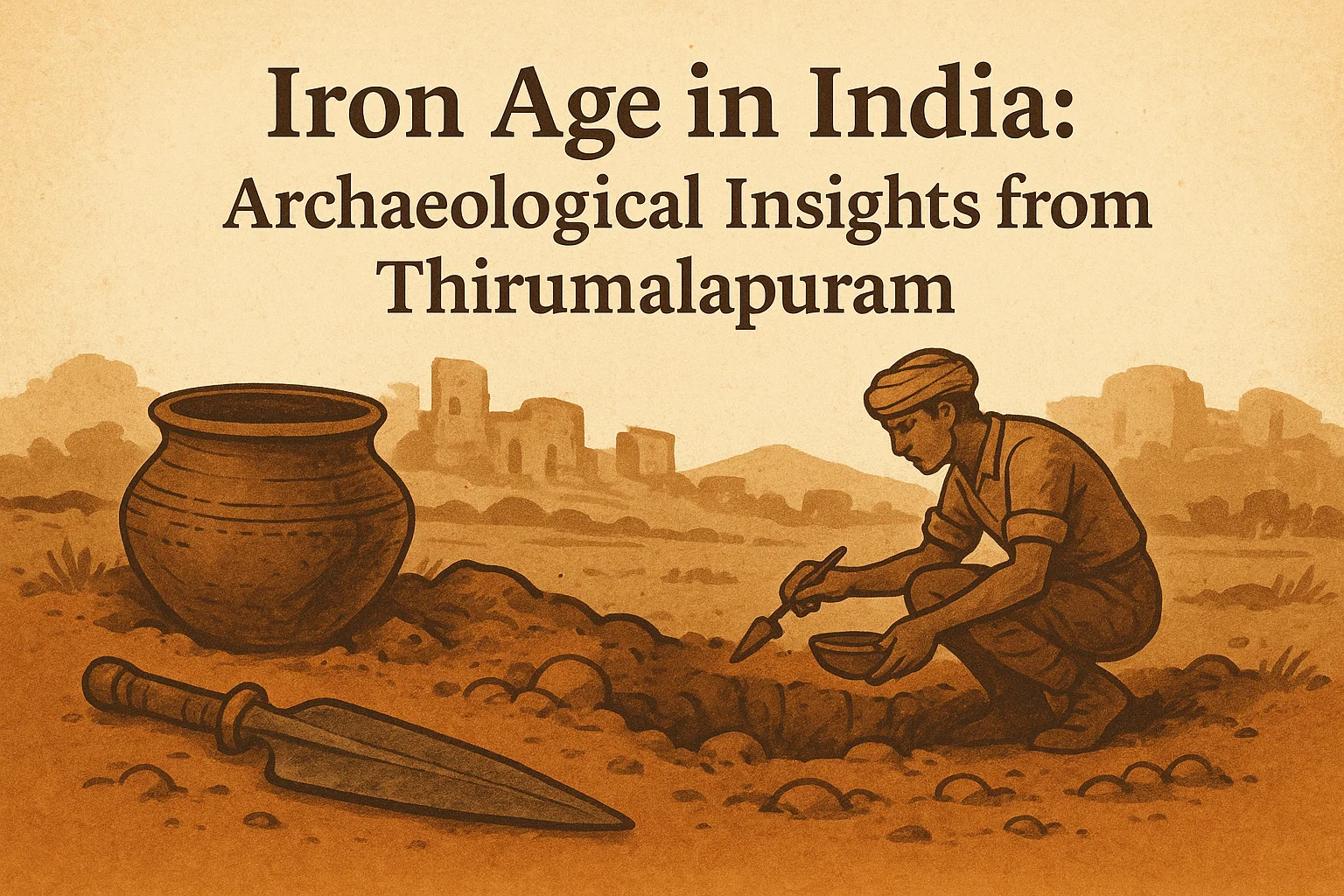ISRO’s Integrated Air Drop Test (IADT-1)
Explore how ISRO’s IADT-1 strengthens astronaut safety, advances Gaganyaan, and marks India’s progress towards space station and lunar missions.

Introduction
India has long hoped to join the small group of nations that can send humans into space. This dream has taken shape through the Gaganyaan Programme, which aims to carry Indian astronauts, known as “Vyomanauts”, into low-Earth orbit. More than a symbol of pride, the mission represents independence in technology and preparation for larger goals such as building a space station and exploring the Moon. As Vasudevan Mukunth noted in his report, “What is the Air Drop Test Conducted by ISRO?” (The Hindu, 27 August 2025), human spaceflight requires safety of the highest order, for even the smallest error can endanger lives. The recent Integrated Air Drop Test (IADT-1) by the Indian Space Research Organisation (ISRO) marked an important step in this direction. This essay argues that IADT-1 is both a technical achievement and a symbolic milestone, showing India’s readiness to advance carefully towards human space travel.
Safety Challenge
Re-entry into Earth’s atmosphere is considered one of the most dangerous phases of space travel. A crew module returning from orbit experiences extreme heating, aerodynamic pressures, and rapid deceleration. Once slowed by atmospheric drag, it still relies on parachutes to reduce its terminal velocity to safe splashdown levels. History bears lessons of tragedies such as the Soyuz 1 accident in 1967, where parachute malfunction cost an astronaut’s life. Therefore, testing the parachute deceleration system is essential, since its failure would almost certainly prove fatal. ISRO’s IADT-1 sought to address this very challenge by proving the reliability of the parachute deployment sequence under realistic conditions.
Test Execution
On 24 August 2025, ISRO conducted IADT-1 in collaboration with the Indian Air Force, Defence Research and Development Organisation (DRDO), Indian Navy, and Coast Guard. A 4.8-tonne dummy crew module was carried by a Chinook helicopter to an altitude of three kilometres before being released. From that moment, the capsule’s avionics system autonomously directed the parachute sequence. The system followed a multi-stage design involving four types of parachutes: Apex Cover Separation, Drogues, Pilots, and Main Parachutes. Together, they reduced the capsule’s speed to about 8 metres per second, a velocity considered safe for astronauts. The test also simulated launch abort conditions and allowed naval forces to rehearse recovery operations, thereby validating the entire survival chain.
Engineering Philosophy
The test was grounded in the hypothesis that if parachutes deploy in the correct sequence, the module will decelerate to safe splashdown conditions. This reflects not only an aerodynamic principle but also the philosophy of redundancy. Human-rating a system means designing it to sustain life even if one component fails. In this sense, parachute testing becomes an ethical responsibility, assuring astronauts that every measure has been taken to protect them. The flawless demonstration of autonomous parachute deployment during IADT-1 thus reinforced trust in the mission’s engineering foundations.
Symbolic Value
The IADT-1 was not merely a technical success but also a symbolic milestone. It placed India among nations capable of developing sophisticated human spaceflight safety systems. It also marked a crucial step towards upcoming missions such as the Test Vehicle Abort Demonstration (TV-D2) and the first uncrewed Gaganyaan mission (G-1), scheduled for late 2025. Each of these tests builds incremental confidence, laying the groundwork for the first crewed mission, currently targeted for 2027. Success in these endeavours strengthens both domestic confidence and international recognition of India’s growing space capabilities.
Recognised Limitations
Despite its success, IADT-1 has certain limitations. The helicopter drop did not recreate the full hypersonic and thermal conditions of actual orbital re-entry. Furthermore, the Environmental Control and Life Support System (ECLSS), which must regulate air, temperature, and pressure for astronauts, was not tested in this scenario. The absence of human occupants also meant that psychological and physiological responses to vibrations and g-forces remain unmeasured. Additionally, while the target for a crewed mission is 2027, delays such as the postponement of IADT-1 from April 2024 suggest that timelines may shift. These factors highlight the need for further testing and cautious optimism.
Collaborative Effort
A notable feature of IADT-1 was its multi-agency collaboration. The Indian Air Force provided heavy-lift capability, DRDO contributed expertise in safety systems, while the Navy and Coast Guard rehearsed recovery operations. This integrated approach mirrored the requirements of the actual mission, where astronaut survival will depend on the combined efficiency of multiple institutions. Such coordination not only adds credibility to the test but also strengthens national preparedness for future human spaceflight.
Strategic Roadmap
The Gaganyaan mission is part of a broader roadmap leading towards ambitious long-term goals. Following IADT-1, ISRO plans further abort tests, uncrewed orbital flights, and complete system integration before astronauts are placed aboard. Beyond Gaganyaan, India envisions establishing the Bharatiya Antariksh Station by 2035 and attempting a crewed lunar landing by 2040. Lessons from IADT-1 and similar demonstrations will directly support these larger ventures, including docking operations, extended habitation, and deep-space technologies. Step by step, ISRO is building a foundation for sustainable human presence in space.
Future Priorities
For progress to continue, several priorities emerge. First, holistic validation of all critical systems, especially ECLSS and fire safety, must match the attention given to parachutes. Second, future tests should simulate partial failures to confirm redundancy and resilience. Third, naval and recovery teams must conduct repeated rehearsals, ensuring swift rescue of astronauts in real missions. Finally, safety must be prioritised over schedule. National pride should never outweigh the imperative of safeguarding human life. By adhering to a safety-first ethos, ISRO can ensure that future astronauts will return home safely, regardless of delays.
Long-Term Vision
The success of IADT-1 extends beyond immediate validation of descent safety. It represents a building block in India’s gradual ascent as a global space power. Each achievement feeds into the next, from crew survival systems to orbital infrastructure, and eventually to lunar expeditions. Technological innovations arising from the Gaganyaan programme will also strengthen India’s industrial base, enhance research, and inspire future generations. In this way, IADT-1 is not only about parachutes and splashdowns but about shaping a national future in which India actively contributes to human exploration of space.
Conclusion
The Integrated Air Drop Test of August 2025 was a moment of both quiet triumph and sober reflection. By proving that astronauts can rely on the parachute deceleration system, ISRO cleared a major hurdle towards human spaceflight. At the same time, the test reminded observers that much remains to be done before astronauts can be sent aloft with confidence. The narrative of Gaganyaan is therefore one of patience, caution, and steady progress. Within this journey, IADT-1 stands as an indispensable milestone, showing that India is not only reaching for the skies but also laying the groundwork to touch the stars.
Subscribe to our Youtube Channel for more Valuable Content – TheStudyias
Download the App to Subscribe to our Courses – Thestudyias
The Source’s Authority and Ownership of the Article is Claimed By THE STUDY IAS BY MANIKANT SINGH


